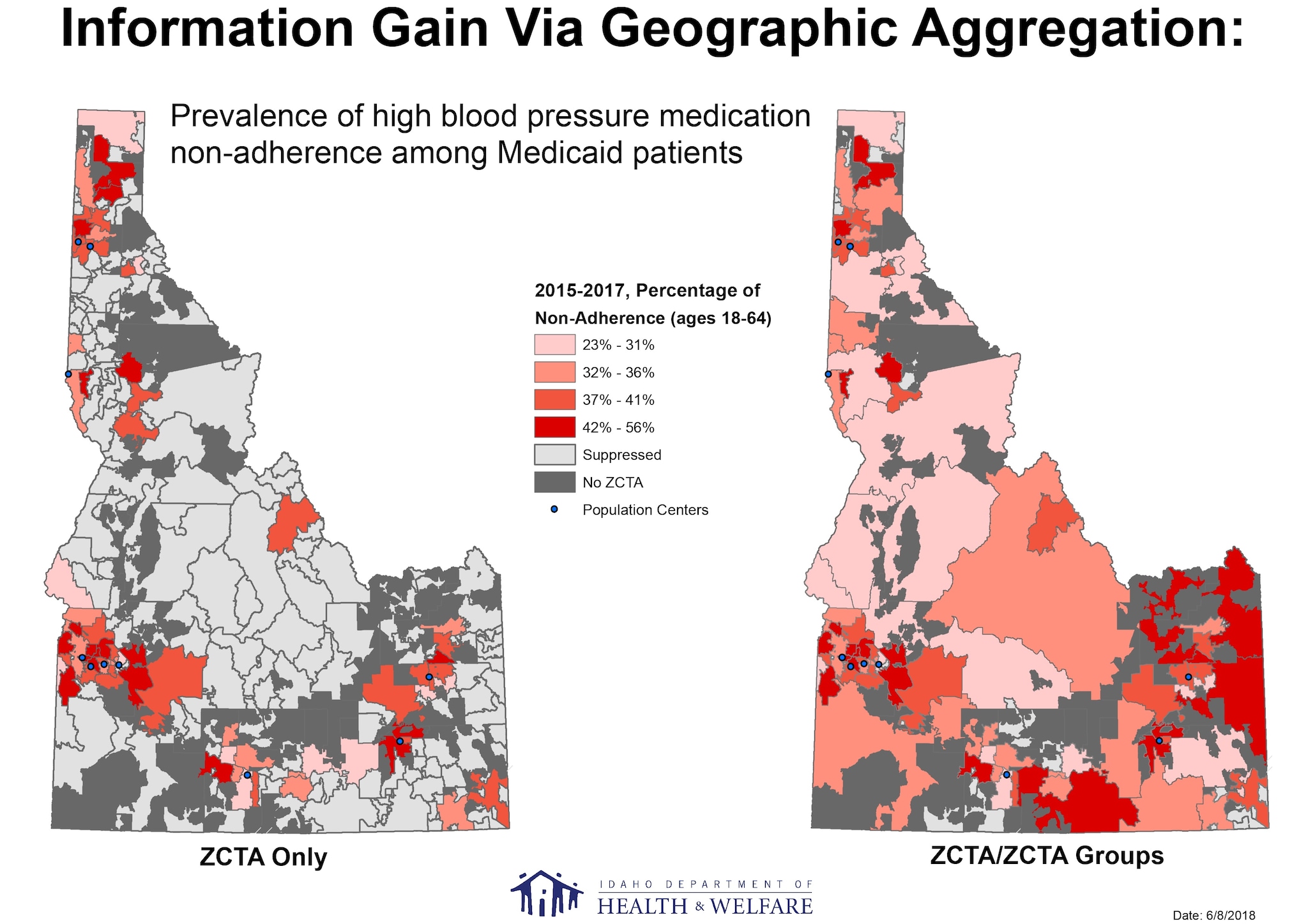Key points
Map

Data sources
The map indicates variable but elevated rates of non-adherence within the state’s population centers (top 10 Idaho cities by population size) with higher rates frequently seen in adjoining rural areas. Improving access to effective services within Idaho population centers can positively impact overall Medicaid non-adherence rates. However, this map suggests that abundant opportunities to improve non-adherence rates also exist outside of the state’s metro areas.
This map will be shared with Division of Public Health and Division of Medicaid administrators, Heart Disease and Stroke Prevention Program staff, and Idaho Bureau of Rural Health and Primary Care to guide program planning efforts, especially in rural parts of the state.
ArcGIS 10.4.1
Medicaid rates and pharmacy data- Idaho Medicaid Data Warehouse, ZCTAs- 2017 ZCTA boundary files, Population Centers- Ten most populated Idaho cities based on 2017 Census data.
High blood pressure medication non-adherence was estimated by proportion of days covered (following "CALCULATING PROPORTION OF DAYS COVERED (PDC) FOR ANTIHYPERTENSIVE AND ANTIDIABETIC MEDICATIONS: AN EVALUATION GUIDE FOR GRANTEES"). Non-adherence estimates were classified using a quantile classification scheme. ZCTA groups were made manually using population weighted centroids and location of incorporated cities as guidance for creating meaningful groupings.
Many parts of the state, particularly rural areas, remain suppressed despite aggregating data over 3 years. Estimates of health behaviors and/or conditions in rural areas of Idaho are frequently suppressed due to either statistical unreliability or potential for breaches in confidentiality. The right-hand map overcomes these issues by further aggregating over space to create rural ZCTA groups. A small number of rural ZCTAs in the state remain suppressed (cell counts <15). It was determined that these ZCTAs merit continued suppression (rather than further aggregation) as both their population sizes are small and their population centers are relatively distant from those of adjoining ZCTAs. This also allowed for preservation of geographically specific estimates in adjoining ZCTAs.
Robert Graff, Idaho Department of Health, Division of Public Health
208-334-6521
robert.graff@dhw.idaho.gov
Robert Graff, Idaho Department of Health, Division of Public Health. Accessed from the Centers for Disease Control and Prevention's Chronic Disease Map Gallery.
